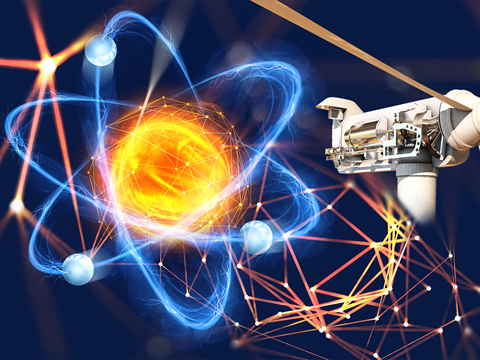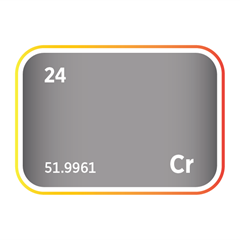Robotics
Critical minerals, policy, and the energy transition
Critical Minerals and Robotic Technologies
As robotics continues to advance, the demand for critical minerals has grown significantly. These minerals play an essential role in developing high-performance robotic systems, ensuring strength, durability, conductivity, and precision across various applications. From industrial automation and medical robotics to space exploration and defence technologies, robotics relies on a wide range of specialized materials to function effectively. Each critical mineral serves a specific purpose in different components of robotic systems. Some enhance structural integrity, allowing robots to withstand mechanical stress and harsh environments, while others improve conductivity, sensor accuracy, and motor efficiency. The integration of these materials into robotic technologies enables greater innovation, pushing the boundaries of automation, artificial intelligence, and human-machine interaction. This guide explores the key minerals used in robotics across structural frameworks, actuators, electrical systems, sensors, and motors. Understanding these essential elements provides insight into the complex material requirements for cutting-edge robotic development and securing a stable supply chain for future technological advancements.
Civil applications
-
Precision agriculture and farming
-
Photography and filmmaking
-
Infrastructure inspection and monitoring
-
Disaster risk assessment and post-disaster analysis
-
Manufacturing and construction support
-
Wildlife monitoring and conservation
-
Urban planning and development
-
Public health monitoring
-
Weather and atmospheric research
-
Traffic monitoring and management
-
Entertainment industry (aerial displays)
-
Recreational imaging
Defence applications
-
Surveillance, target acquisition, and reconnaissance
-
Precision strike capabilities
-
Offensive and defensive combat operations
-
Electronic warfare operations
-
Anti-drone (Counter-UAS) operations
-
Swarm operations (coordinated autonomous drone operations)
-
Border security and patrol
-
Communication relay missions
-
Mine detection and clearance
-
Military cargo transport
Dual-use applications
-
Delivery and transportation of goods and services
-
Infrastructure inspection and monitoring
-
Search and rescue operations
-
Environmental monitoring
-
Terrestrial imagery and mapping
-
Law enforcement support and crime scene investigation
-
Humanitarian crisis response
-
Forest fire detection and monitoring
-
Maritime Surveillance and Coastal Monitoring
-
Resource exploration (mining, oil, and gas)
-
Aerial land surveillance
Structural Framework & Mechanical Components
The structural integrity of a robot is crucial for its durability, stability, and performance. Many critical minerals are used to create strong, lightweight, and corrosion-resistant materials that form the skeleton of robotic systems. These metals are essential for building frames, chassis, and protective casings that withstand mechanical stress, environmental conditions, and long-term wear.
-
Aluminium – Known for its lightweight and high-strength properties, aluminium is a key material in the construction of robotic frames and chassis. It helps reduce the overall weight of robots, making them more energy-efficient while maintaining durability. Its corrosion resistance also ensures longevity, particularly in outdoor and industrial applications.
-
Titanium – This metal is widely used in robotic arms, actuators, and high-strength structural components due to its exceptional strength-to-weight ratio. Titanium alloys provide superior toughness while remaining lightweight, making them ideal for aerospace and medical robotics, where precision and durability are paramount.
-
Chromium – A crucial element in stainless steel, chromium enhances corrosion resistance in robotic parts. It helps protect robotic structures from rust and degradation, ensuring longevity in environments exposed to moisture, chemicals, or extreme temperatures. Chromium-containing alloys are often used in robotic casings and high-wear components.
-
Manganese – Essential in strengthening steel alloys, manganese improves the hardness and impact resistance of robotic components. It is commonly found in gears, frames, and high-stress mechanical parts, providing durability and reliability in industrial and heavy-duty robots.
-
Iron – A fundamental material in robotics, iron is primarily used in the form of cast iron or steel alloys. It provides the core strength needed for large robotic structures and base components, ensuring stability and load-bearing capacity in both stationary and mobile robots.
-
Nickel – Often used in stainless steel fasteners, connectors, and frames, nickel enhances mechanical strength and corrosion resistance. It is particularly valuable in industrial robotics, where harsh environments require materials that can withstand high temperatures and chemical exposure. Nickel also plays a role in electroplating to enhance wear resistance.
-
Niobium – A microalloying element added to high-strength structural steel, niobium increases toughness and reduces weight without compromising strength. It is particularly beneficial in advanced robotic frameworks, ensuring high performance in dynamic and high-load applications such as robotic exoskeletons and heavy machinery.
-
Molybdenum – Used in stainless steel alloys, molybdenum significantly improves heat resistance and durability. It is essential in robotic structures that operate in high-temperature environments, such as industrial welding robots, aerospace applications, and robotic systems used in extreme conditions.
Joints, Actuators & Moving Parts
Robotic movement relies on a combination of actuators, joints, and mechanical linkages that provide precise motion and flexibility. These components require high-strength materials that can endure repeated movement, friction, and varying loads. The critical minerals in this category help improve durability, reduce wear, and enhance efficiency in robotic motion systems.
-
Titanium – With its high strength-to-weight ratio, titanium is widely used in actuators and robotic joints. Its lightweight properties reduce the strain on moving parts, while its excellent fatigue resistance ensures durability in high-precision applications such as robotic exoskeletons, aerospace robots, and medical surgical systems.
-
Manganese – A crucial component in steel alloys, manganese enhances toughness, wear resistance, and mechanical strength. It is particularly important in gears, axles, and other moving parts that experience continuous stress and impact. Manganese-based alloys help reduce material fatigue, increasing the lifespan of robotic mechanisms.
-
Nickel – Applied in electroplating and high-performance alloys, nickel enhances the wear resistance of robotic components. It provides a protective coating that reduces friction and corrosion in moving parts, ensuring smoother operation over time. Nickel-plated joints and actuators are commonly found in industrial and heavy-duty robotic applications.
-
Chromium – An essential alloying element in high-strength alloys, chromium improves the durability and corrosion resistance of robotic joints and moving parts. Its inclusion in stainless steel and other alloys ensures that actuators and mechanical linkages maintain structural integrity, even in demanding environments such as underwater robotics and high-temperature applications.
-
Iron – The backbone of many steel-based robotic components, iron is used in actuators, robotic limbs, and moving structures. As a core material in steel alloys, it provides the necessary strength and stability for heavy-load robotic systems. Whether in robotic arms, industrial manipulators, or humanoid robots, iron-based materials ensure robustness and reliability.
Wiring, Conductivity & Electrical Systems
Efficient power distribution and signal transmission are essential for robotic functionality. Electrical wiring, connectors, and power systems rely on materials with excellent conductivity and durability. The minerals in this section ensure that robots can operate with minimal energy loss, effective communication, and reliable performance in a range of conditions.
-
Copper – A primary material in electrical wiring and connectors, copper is known for its excellent electrical conductivity and thermal efficiency. It is widely used in robotic power distribution systems, ensuring efficient energy flow to motors, sensors, and control units. Copper is also critical in electromagnetic shielding to reduce interference in high-precision robotic applications, such as autonomous drones and surgical robots.
-
Gallium – Found in electro-optical systems and power electronics, gallium plays a crucial role in robotic communication devices and advanced semiconductor technologies. Gallium-based materials, such as gallium arsenide (GaAs) and gallium nitride (GaN), are essential for high-frequency radio transmissions, laser diodes, and infrared sensors. These applications improve robotic vision, remote communication, and energy-efficient power conversion, particularly in aerospace, military, and industrial robotics.
Sensors & Electro-Optical Systems
Sensors and electro-optical components are vital for robotic perception, enabling them to detect their environment, process data, and make real-time decisions. These materials are used in imaging systems, infrared sensors, and advanced communication technologies, enhancing the robot’s ability to interact with its surroundings and respond effectively.
-
Beryllium – Known for its lightweight and high-stiffness properties, beryllium is widely used in high-precision sensors and electro-optical components. It is particularly valuable in aerospace and defence robotics, where precision targeting and imaging systems rely on its thermal stability and ability to minimize distortion. Beryllium’s role in X-ray and infrared applications also makes it critical for medical imaging robots and autonomous robotic vision systems.
-
Gallium – A crucial element in infrared sensors, laser-based communication, and optoelectronic devices, gallium is used in advanced semiconductor materials such as gallium arsenide (GaAs) and gallium nitride (GaN). These compounds enable high-efficiency photodetectors, LED displays, and laser systems used in robotic vision, environmental mapping, and high-speed communication networks. Its role in night-vision and thermal imaging makes it indispensable in military and surveillance robotics.
-
Indium – Essential in touchscreens, optical sensors, and robotic interface displays, indium is most commonly found in indium tin oxide (ITO), a transparent conductive material used in high-resolution touch interfaces and flexible displays. Indium-based sensors enhance robotic tactile feedback and pressure sensitivity, allowing robots to interact more effectively with human operators and delicate objects. It is also used in photodetectors for autonomous navigation and industrial automation.
Motors & Magnetic Components
High-performance motors are at the core of robotic movement, driving efficiency, speed, and precision. Permanent magnets play a crucial role in electric motors, allowing robots to generate power efficiently. The minerals in this section enhance the strength, reliability, and thermal stability of motors, ensuring smooth and consistent robotic motion.
-
Boron – A critical component in neodymium–iron–boron (NdFeB) permanent magnets, boron enhances the magnetic strength and stability of electric motors used in robotics. NdFeB magnets are widely used in high-torque servo motors, precision actuators, and robotic propulsion systems. Boron is also used as a lubricant in mechanical components, reducing friction and wear in robotic joints and bearings.
-
Praseodymium – Often combined with neodymium in NdFeB magnets, praseodymium enhances the performance of high-efficiency motors by improving magnetic properties. It contributes to the strength and durability of permanent magnets used in electric motors, ensuring smooth and powerful robotic movements. Praseodymium-based magnets are essential in applications where high-speed operation and precise control are required, such as robotic arms and drones.
-
Neodymium – A key element in NdFeB permanent magnets, neodymium is critical for the operation of powerful yet compact electric motors in robotics. These magnets provide high torque and energy efficiency, making them ideal for servo motors, robotic actuators, and motor-driven robotic limbs. Neodymium magnets enable advanced robotic systems to function with high precision and rapid response times, essential for applications such as industrial automation and medical prosthetics.
-
Dysprosium – An important additive in NdFeB magnets, dysprosium improves their heat resistance and magnetic stability, allowing motors to operate efficiently under high temperatures and demanding conditions. This is particularly crucial for robotics used in industrial settings, aerospace applications, and extreme environments where heat exposure could degrade standard magnets. Dysprosium ensures that robotic motors remain efficient and reliable even in harsh conditions.


Critical sectors using strategic minerals

Meet the Critical Minerals team
Trusted advice from a dedicated team of experts.

Henk de Hoop
Chief Executive Officer

Beresford Clarke
Managing Director: Technical & Research

Jamie Underwood
Principal Consultant

Ismet Soyocak
ESG & Critical Minerals Lead

Rj Coetzee
Senior Market Analyst: Battery Materials and Technologies

How can we help you?
SFA (Oxford) provides bespoke, independent intelligence on the strategic metal markets, specifically tailored to your needs. To find out more about what we can offer you, please contact us.
































